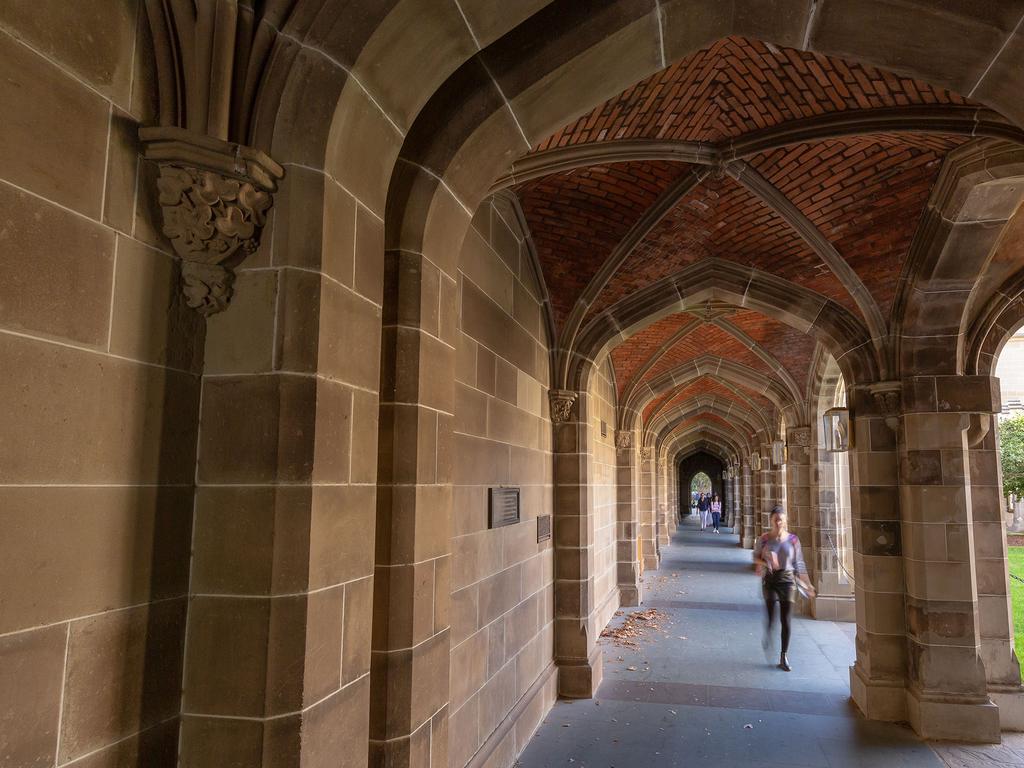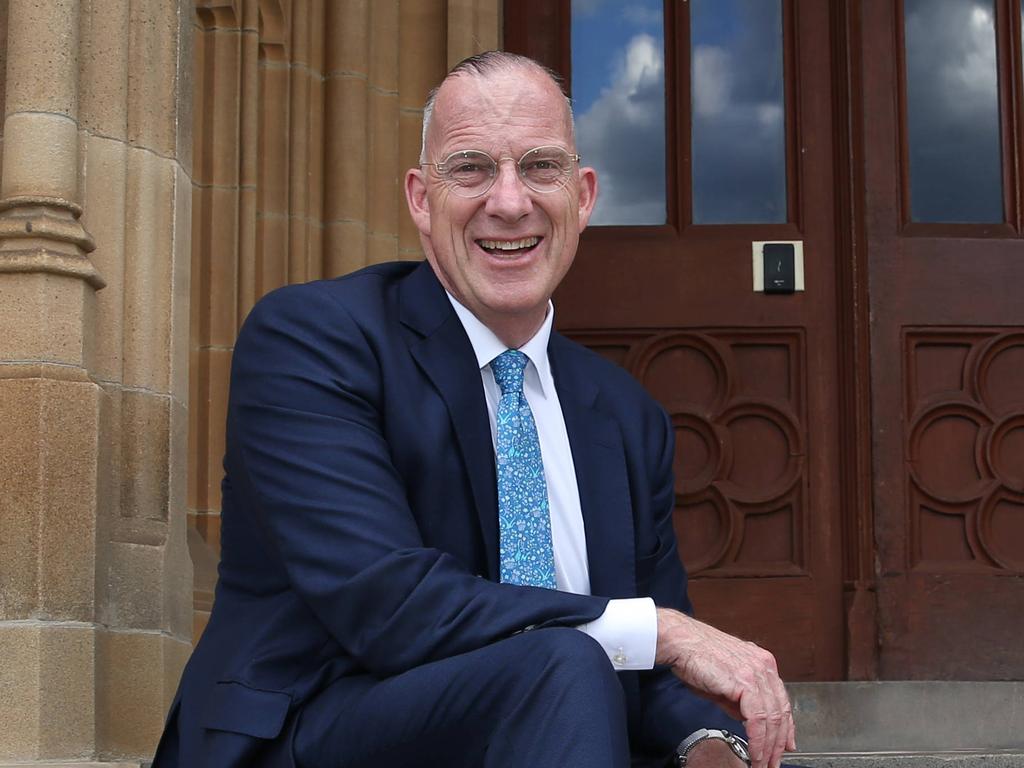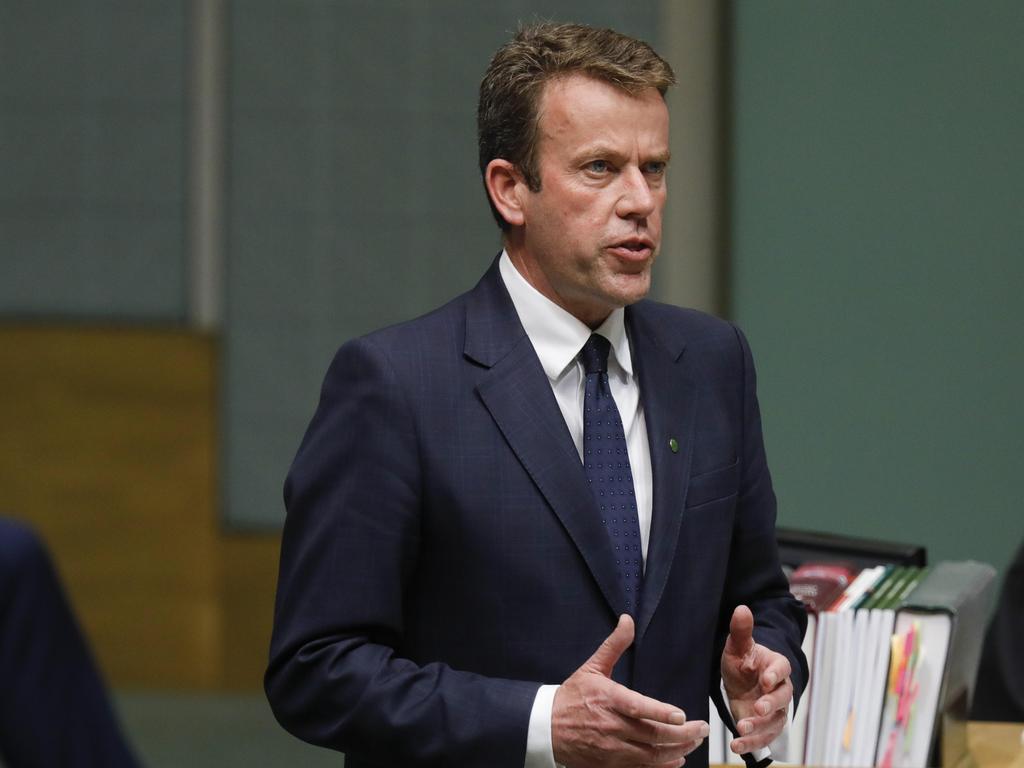Break in supply chain means elite unis struggle to survive


Everybody is used to universities saying they are broke, and that Western civilisation will end at noon. But this time there really is something big to worry about.
It is not federal Education Minister Dan Tehan’s Job-Ready Graduates package. That may not be perfect, but it is fundamentally sound. Tangential attacks on it by “elite” universities have the usual, unappealing ring. “Just give us the money! Now!”
The real problem is that the previously strong Australian university system is entering unparalleled times of chronic vulnerability and uncertainty. Whatever that system looks like in five years, it will be radically different from today.
The ultimate villain, as in so many contemporary dramas, is COVID. In shutting Australia from the rest of the world, it has broken the supply chain of the international student market.
To most people, this does not compare with the death of a grandparent or their spouse being locked in quarantine. But to the higher education sector it is a catastrophe. Why? Because this break in the supply chain also has broken the basic business model of a whole bunch of Australian universities, notably including most who see themselves at the top of the tree — the sandstones and sandy concretes constituting the Group of Eight.

These universities are proud and consciously elitist. They also are very good at research. But pride and accomplishment have foundations in sand — sand imported from overseas.
During the past 20 years, these and some other very good universities have become utterly reliant on overseas student revenue. They particularly are hooked on high-fee-paying students from China.
The extent of this is remarkable. To take the most obvious example, in 2018 the stately University of Sydney drew 39 per cent of its students from overseas. A staggering 69 per cent of these were from China. Overseas students produced a whopping 35 per cent of Sydney’s total revenue.
Other members of the sandstone alliance — such as the University of Melbourne, Monash University, the University of NSW and the Australian National University — likewise are critically reliant on overseas revenue, typically with a lucrative Chinese component. Certain much less affluent universities also are badly affected.
The result is that some of Australia’s most prominent universities are facing revenue hits in the hundreds of millions of dollars. Genuinely. Their current operations simply cannot be sustained.
The real question is: how did they get into this situation? It was not for lack of warning. Everybody knew of the unhealthy reliance on overseas students, especially the single-source problem with China. No heed was given.
At the heart of the problem for the Go8 in particular was the simple motive of revenue. They could charge international students multiples of what they could get for a domestic student. The maths made sense.
Fundamentally, these profits fed what mattered most to the sandstones: the research rankings arms race.

Elite universities in Australia are desperate to be seen as international research players. It is part laudable national ambition, part sheer institutional ego.
But research is expensive and most universities consider their research underfunded by government, citing OECD comparisons. International student reliance was the mortgage taken out to fund stellar research reputations and corresponding buildings, budgets and conditions.
It had a side benefit, too. By bringing in international students, elite universities could dampen their domestic enrolments. The immutable laws of supply and demand then would drive their Australian Tertiary Admission Rank scores through the roof. This allowed privileged universities to scoff not only at the research performance of their competitors but also their student entry standards. Nice work, so long as you can get it.
Successive governments also must bear some of the blame. While the hunger of some universities for overseas dollars probably was insatiable, it certainly was convenient to government that any shortfalls in research funding would be covered by foreign student earnings. And what prime minister does not like Australian universities at the top of world rankings?
But the current fiasco fundamentally is underpinned by the financial psychology of universities themselves. They monetarised themselves, progressively defending their place not as being indispensable to civil society but as Australia’s “second (or third) largest export industry”.
The problem being, if it is only about money, what happens when the money stops? As it has. Particularly when there is no sign of mass international enrolments restarting any time soon. The icy grip of COVID chills the courage of policymakers as much as it freezes our borders. The precise future here is unguessable.
Many may feel little sympathy for aristocratic institutions down on their luck. But the potential for financial contagion is immense. For a start, it is not only the Go8 that is exposed. Some very good second-tier universities, such as RMIT in Melbourne and University of Technology Sydney, also are in trouble. So are some quite vulnerable institutions, such as Federation University Australia in Ballarat.
Even more concerning, are potential attempts by elite universities to mitigate consequences of their own actions through cannibalising the domestic enrolments of other universities. In Britain, where this process is already under way, it has a name: the Hunger Games.
This is what happens when a privileged university with a big name and a historic taste for enrolling large numbers of overseas students turns, not by preference but necessity, to the domestic market. It enrols students it previously never would have accepted, draining the enrolment pool of other institutions long disdained.

This is a deeply cynical exercise. The university does not want the students. It is on record as saying that their entry levels are too low. They can expect to be treated accordingly. Worse, elite universities have never developed huge educational platforms for dealing with masses of students from less-advantaged backgrounds with corresponding entry profiles. That was left to “working universities”.
Worst of all, assuming overseas students come back, these domestic stand-ins will be as welcome as a hobo at the Melbourne Club. Normal transmission will be resumed. But in the meantime, the damage right across the sector will be profound. Universities that have nurtured their communities and fostered the development of students with potential but without privilege will be left with gaping holes in their enrolments and budgets, which they can afford far less than their upper-crust cousins.
This is the danger still widely unappreciated by policymakers. The option for “leading” universities to pass on the consequences of their own financial actions to less exposed and less wealthy institutions has the potential to wreck the whole sector.
Already, there are less straws than lumps of wood in the wind. In media reports, UNSW is predicting a 10 per cent rise in demand. ANU has made 5000 early offers, nearly 3000 more than last year.
Most vulnerable will be business and law schools, where the student contribution is higher, and under the Tehan plan will get higher still. Most universities expect a major assault here, which would undermine their ability to run less profitable but vital courses such as nursing and teaching. Particularly at risk will be already struggling regional institutions.
What’s wrong with competition, you say? Nothing, except that the reputation elite universities will use as bait is based on rankings and buildings bought with the same reliance on international gold that has brought them low. And their offer will be to domestic students they have disdained to teach for decades, do not want, cannot service and look forward to replacing.

Admittedly, the legislative package does contain specific measures that might soften the Hunger Games. Most notably, increases in new student places are weighted towards regional and high population growth metropolitan areas, which hardly favours the nobs. But will this be enough? Paradoxically, of course, the Tehan project is all about trying to deal with a larger overall student pie. Whether that pie is large enough to satiate tertiary cannibals remains to be seen.
But it is true that next year we can expect to see the entry of two new cohorts of students — the Costello baby boom and the unfortunate COVID generation, who have been displaced from work and will try to upskill to find their next job. Some say this will mean enough students for everyone. Others, especially those responsible for enrolments, are more dubious. Exactly where will these students go? Which courses? What will be their ATARs, once the elites have dropped their own through the floor?
Whatever, the remarkable thing about the shrill criticisms of the legislative package — especially from elite universities — is the scant recognition of the two central realities underlying it.
First, Tehan desperately needs to create new places for new students or they will languish in unemployment. Second, he has no extra money to pay for them, nor any prospect of getting it.
Consequently, he must make room in his own budget. That is why funding for different types of units has been recalibrated — to make room for Australians who lost their jobs because of the pandemic. It genuinely is a moral as well as a policy imperative.
You can argue about which course gets what funding, and even grieve for humanities students who will pay much, much more. But short of restoring the demand-driven system, which is not on the table, the overall imperative really is unarguable.
You also can reasonably worry about transitional funding arrangements, and funding guarantees. But Tehan has foreshadowed speedy legislative solutions, which seem to be emerging.
All of which outs the frenzied opposition of the Go8 for what it is. They say they want the draft legislation sent to a Senate committee, but that is not the real object. Committees are quiet corners where good ideas are strangled, as Gareth Evans is wont to observe.
So why do these universities, amid their own international crises, want to defeat something that would bring more domestic students into a flagging university market, to the good of institutions and students themselves?
The answer illustrates the same psychological pathology that has beset some of Australia’s elite universities for decades, and that fuelled the present international student disaster.
Again, they just want the money. Their real belief is that government simply should cover their enormous deficits until such time as international students reappear. Anything else is unacceptable. No politician is that stupid. A blank cheque to institutions with limitless ambitions and appetites to match is inconceivable, just like full-fee deregulation.
This is a critical take-out lesson from COVID. Were international research rankings really so important that universities should adopt an unsustainable business model, often with implicit connivance by frugal governments? The grim COVID answer is no.
There also is a sharp warning to conservatives here. They tend to berate all universities on principle, but reserve special bile for suburban and regional institutions. Their hearts are still with the sandstones they attended, no matter how infuriating they may be.
Yet which universities are most dubious of freedom of speech? Which foster the craziest of the academic crazies? Which repudiated domestic populations and led the way into the international abyss? Not regional and suburban universities. So what is the solution? Counter-intuitively, it is to save the elite institutions. First because, perennial self-congratulation aside, they really are national research powerhouses. Australia will rue their diminution. Second because, if not saved, they may by predation bring down the entire system with them.
The only way to achieve this is to restart international student entry as soon as prudently possible. This cannot be rushed and must be done while absolutely maintaining all public health objectives. But it is the single obvious means by which the malignant pressure for cannibalisation can be removed. If they wish to avoid wrecking university education in Australia, this is something politicians desperately need to factor into their calculations in pondering the reopening of borders.
Otherwise they will be talking about the former Australian university system to the COVID unemployed.
Greg Craven is vice-chancellor of the Australian Catholic University.







We all know the story about the boy who cried wolf. If he had been a vice-chancellor, he probably would have claimed imminent attack by Tyrannosaurus rex.